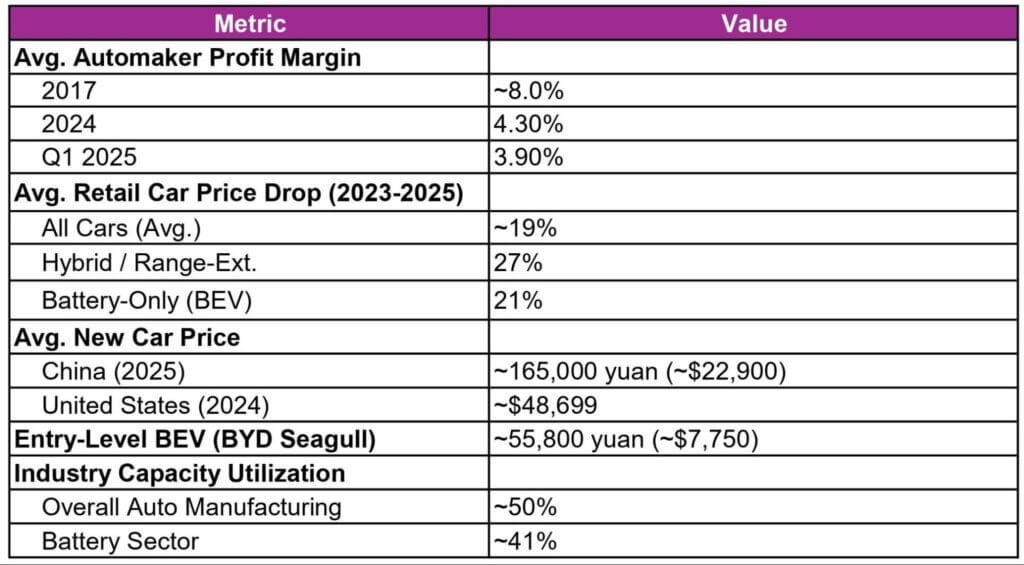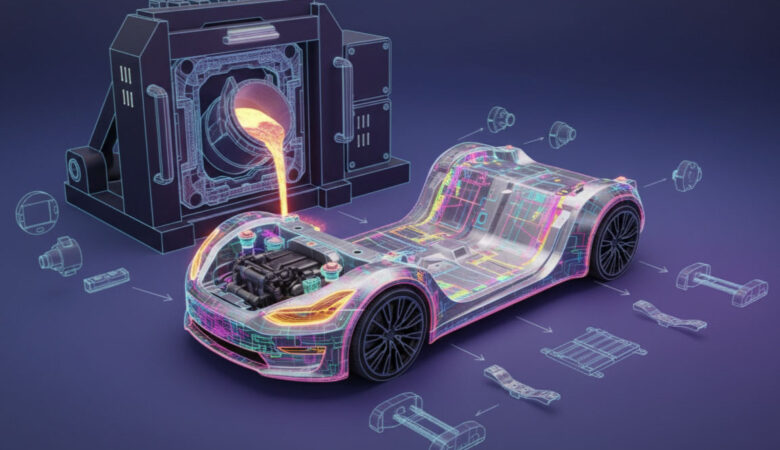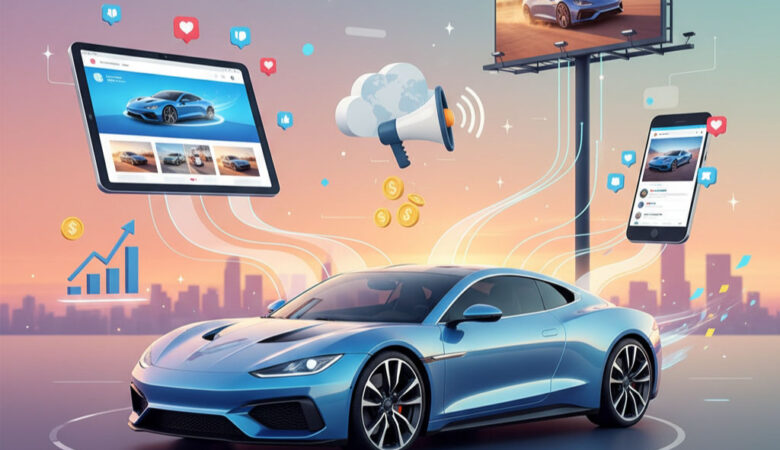Why are electric vehicles suddenly so cheap? It sounds like good news to buyers, but it is causing havoc in the industry. The EV price war, fuelled by huge price cuts from big manufacturers such as BYD, is straining profits and compelling automakers to focus more on survival than quality. Dealerships are left with unsold inventory, and experts warn that the race to the bottom could leave only a few strong players standing.
Is there a way out? Governments are stepping in, introducing rules to curb reckless price drops and stabilize the market. But new policies alone might not be enough. Automakers need to strategically adapt, find sustainable ways to compete, and focus on long-term growth.
Keep reading to understand what’s driving this battle, how it impacts consumers, and what the future might hold for the EV industry.
What is the EV Price War?
To understand the price war, you have to understand a concept the Chinese call “neijuan” or involution. In the context of the auto industry, involution occurs when aggressive industrial policy inflates an industry with subsidies, leading to massive overcapacity.
Here is how the cycle works: The government targets an industry for growth and floods it with cheap land, loans, and subsidies. This “steroid” injection allows production to scale far beyond what the market actually demands. The result? A glut of supply. By 2026, it is estimated that Chinese EV manufacturers will have the capacity to build 25 million vehicles a year—roughly the entire projected demand for the whole world.
With too many cars and not enough buyers, companies panic. They slash prices to keep factories running and cash flowing. In the last two years alone, the average retail price of a car in China has plummeted by 19%, dropping to around 165,000 yuan ($22,900). For battery-only EVs, the cuts are even deeper, dropping by 21%.
This isn’t just healthy competition. It is “destructive competition” where firms sell below cost just to stay alive, creating a market littered with “zombie firms”—companies that should be bankrupt but are kept on life support by local governments.

Table 1: The Chinese EV Price War by the Numbers (2024-2025)
The Cost of the Price War
While cheap cars sound great for buyers, the financial toll on the industry is devastating. The “involution” has triggered a chain reaction that hurts everyone from manufacturers to the workers on the assembly line.
A. Strained Profit Margins
The most immediate casualty is profitability. As price cuts ripple through the market, margins have evaporated. By early 2025, the average profit margin for automakers in China had crashed to just above 4%, the lowest point in recent history.
Take the suppliers, for instance. They are often the unsung victims. Automakers, desperate to cut costs, are squeezing their parts suppliers for price reductions of 10% annually. In extreme cases, suppliers report being forced to lower prices by 40% just to keep the business. This pressure forces suppliers to cut wages, push overtime, and lay off staff.
MORE ON AUTOMOTIVE INNOVATION
Boost Fixed Operations in Dealerships for Efficiency
B. Impact on Dealerships
The pressure to hit ambitious sales targets in this hyper-competitive market has led to what the Chinese Communist Party itself calls “data worship”. Automakers are forcing excess inventory onto dealerships, creating mounting distortions in the market.
Unable to sell this forced stock to actual customers, dealers have resorted to a deceptive workaround: the “zero-mileage used car“.
The pressure to move metal has led to bizarre market distortions. Manufacturers like BYD have been accused of pushing excess inventory onto dealerships to make their sales numbers look better.
The scheme works like this: a dealer, under pressure from the manufacturer, will register a brand-new, unsold vehicle as “sold.” This car, which no actual customer has bought, is then immediately put back on the lot and offload[ed]…as ‘used’, often at a significant loss. This tactic allows the automaker to report an official “sale,” meeting its “data worship” targets, while the dealer absorbs the financial hit.
Such scheme creates involution in the auto community. The state-backed automaker must report high growth, so it distorts the market by forcing inventory onto its “partner,” the dealer. The dealer, who (unlike the manufacturer) is not subsidized and must survive, uses a workaround to delay their own financial collapse, all while corrupting the market’s data.
See? Dealerships are feeling the pressure too. Automakers are pushing excess inventory onto dealers, creating cash-flow challenges and threatening their survival. With many people keeping their cars longer due to economic concerns, overall dealership sales are declining.
This leaves dealerships looking to maximize profitability in other areas, like fixed operations. If you’re in the service department, this is your chance to shift focus and grow. Boosting service department profitability with smarter metrics and better processes can help dealerships navigate the price war’s effects. Learn more by visiting this guide.
Book a 15-Minute strategy session today and find out how to unlock the real value of your dealership.
C. Economic Ripple Effects
The damage extends to real people. Consider the story of Li Hongxing, an ad agency owner who bet big on a rising EV startup called Ji Yue. He borrowed money to cover ad costs, believing the hype. But when the startup collapsed under the weight of the price war, Li was left with 40 million yuan ($5.6 million) in debt.
Li’s story is becoming common. As startups fail, they leave behind unpaid suppliers and bad debts. The “cycle of involution” traps resources in unproductive firms, slowing down necessary market restructuring. Instead of a swift correction, the pain is prolonged because local governments intervene to protect local jobs and “champions,” keeping unprofitable firms afloat far longer than they should be.
Government and Global Pushback
The chaos has become so severe that it has triggered alarm bells in Beijing and capitals around the world.
A. Beijing’s Efforts to Control Chaos
The Chinese government finds itself in a bind. On one hand, they want to stimulate the economy; on the other, they know this “scorched earth” competition is dangerous. Officials have issued stern warnings that there are “no winners in a price war“.
To stem the bleeding, regulators have launched an “anti-involution“ campaign. This includes new rules requiring automakers to pay suppliers within 60 days to prevent a liquidity crisis in the supply chain. They are also tightening export rules, requiring licenses for EV makers to ship overseas starting next year. The goal is to stop the flood of low-quality, cheap cars that could tarnish China EV market reputation globally.
B. International Reactions
The world has noticed the surplus. The flood of Chinese car exports—nearly 6 million last year—has terrified foreign automakers. Countries worry that subsidized Chinese low-cost EVs will wipe out their domestic industries.
In response, the European Union has slapped tariffs on Chinese EV imports, citing unfair subsidies. The United States has gone even further, imposing 100% duties, effectively shutting Chinese EVs out of the American market. Despite these barriers, giants like BYD are still making headwinds, even outselling Tesla in Europe for the first time in April.

Table 2: International Tariff Responses to Chinese EV Exports (2024-2025)
Experts’ Views on the Future
Is there an end in sight? Most experts don’t think so—at least not yet.
A. Sustainability of Price Wars
Industry leaders predict a brutal period of consolidation. He Xiaopeng, the CEO of Xpeng, warned that the “knock-out rounds” in China’s auto industry could last for another five years. His chilling prediction? “There will likely be only five of them left”.
B. Stealth Price Competition
Because direct price cuts destroy brand value and margins, automakers are getting creative. Experts note a shift toward “stealth competition.” Instead of lowering the sticker price, companies are launching new models at lower price points or throwing in expensive features for free.
For example, Zeekr and BYD have started offering advanced driver-assist systems (ADAS) at no extra cost to sweeten the deal, putting pressure on competitors like Tesla who try to charge for similar features.
C. Market Consolidation
The “authoritative person”—likely Xi Jinping’s economic adviser Liu He—diagnosed this problem a decade ago: “the government intervened too much”. The solution is to let zombie firms die. However, because many of these firms are entangled with local governments and state banks, shutting them down is politically difficult. We are likely to see more mergers, like the massive state conglomerates formed in the steel industry, rather than clean bankruptcies.
Also Read: Auto Dealership Consolidation Trends Transform Sales
The Bigger Picture for Consumers
For the average car buyer, this chaotic environment presents a mix of incredible opportunities and significant long-term risks.
A. Benefits for Consumers
There has never been a better time to buy a car in China. Prices for battery-only cars have slashed by 21% on average, and hybrids are down 27%. Such a solid proof for EV price comparison. now, you can buy a BYD Seagull for roughly $7,750—a price point that is unimaginable in Western markets.
Furthermore, the fierce competition forces automakers to innovate rapidly. To win customers, companies are packing budget cars with luxury features and cutting-edge tech. Consumers are getting more value for their money than ever before.
B. Long-Term Risks
However, buying from a desperate company carries risk. If you buy a car from a brand that goes bankrupt in six months—like the customers of Ji Yue—you may find yourself with no access to service, spare parts, or software updates.
Additionally, the “race to the bottom” is hurting quality. As suppliers are squeezed, the durability of components is declining. That cheap EV might run perfectly today, but will it stand the test of time if the manufacturer cut corners to save pennies?
The Chinese EV market is a paradox. It is a stunning success of industrial policy that created a world-leading industry, yet it is also a “cautionary tale” of destructive competition. As the price war rages on, the only certainty is that the industry will look very different five years from now.
Also Read: Managing Customer Privacy Risks in Car Dealerships
Conclusion
Indeed, the EV price war is rewriting the global auto landscape, driving competition and innovation. But, along with this, it is also raising tough questions about sustainability and market stability. As this battle plays out, it’s clear that affordability may win over consumers, but the long-term effects on the industry remain uncertain. If you found this breakdown helpful, feel free to share it with someone who might be curious about what’s fueling these big changes. Your support helps us keep creating more content for readers like you.
—
Author: Maverick Steel is a writer and digital marketer who enjoys connecting the dots for strategy and engaging content. He spent 6 years in secondary education as a proud campus journalist, specializing in editorial and column writing. Holding a bachelor’s degree in Marketing Management, Maverick is also a devoted advocate for positive cyber citizenship and a certified pet lover. When he’s not busy writing, you can catch him hitting the gym or enjoying a matcha latte at the nearest aesthetic coffee shop.





